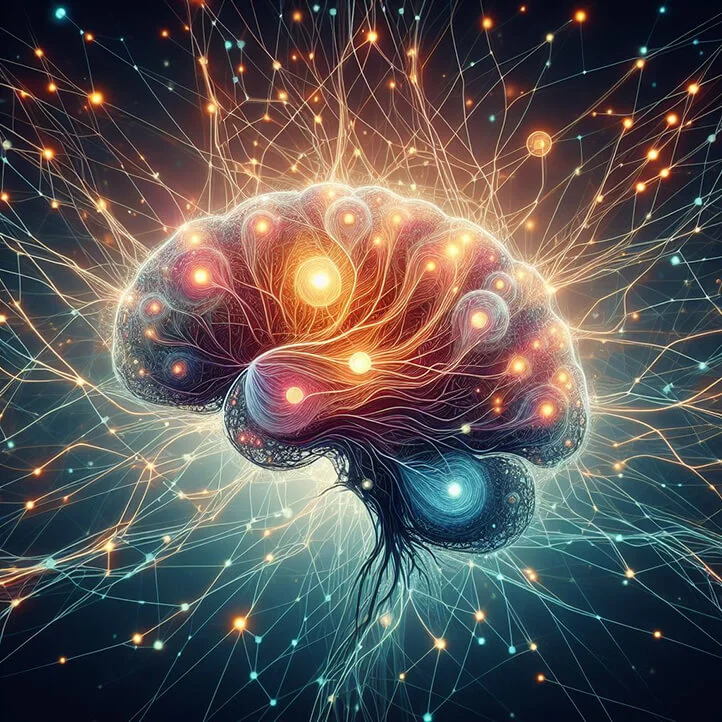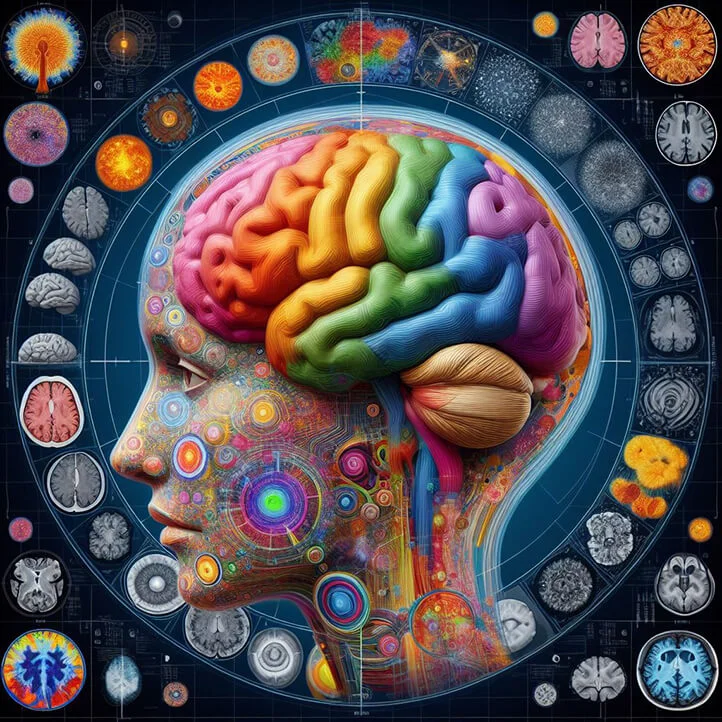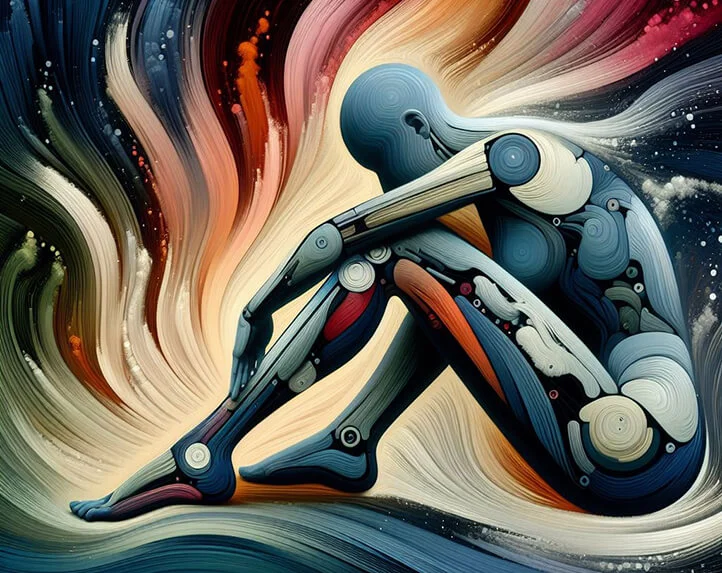Imagine a situation where you feel pain in a part of your body that doesn’t actually exist. Sounds incredible, doesn’t it? But for many people who have undergone limb amputation, this is a reality known as phantom pain. This strange and often distressing phenomenon has long been a mystery to the medical community.
Phantom pain refers to sensations that a person experiences in an amputated body part, such as a lost leg or arm. These pains can feel like shooting, burning, throbbing, aching, or mimicking tingling, numbness, or even muscle cramps in the amputated limb. They vary in intensity from mild discomfort to unbearable agony.
In addition to pain, some people also experience phantom itching, burning, or a feeling of heaviness in the lost limb. These symptoms can occur periodically or be constant, causing significant suffering and disrupting daily life.
Studies show that about 80% of people who undergo amputations experience phantom pain at some point. This issue is common among both adults and children who have had amputations. Phantom pain can appear immediately after surgery or months and years later, making it a serious problem that negatively impacts quality of life.

Mechanisms of Phantom Pain Development
For a long time, phantom pain remained a mystery to scientists and doctors. However, advancements in neurobiology, neuroimaging, and brain plasticity research have helped shed light on this phenomenon. Today, several theories explain the mechanisms behind phantom pain.
Neurophysiological Explanations
One leading theory is that phantom pain arises due to the restructuring of nerve pathways and brain plasticity after amputation. When a limb is removed, nerve endings in the stump continue to send signals to the brain as if the limb is still present. These signals are interpreted as pain sensations coming from the phantom limb.
Another contributing factor may be the formation of neuromas – growths of nerve tissue at the ends of damaged nerves in the stump. These neuromas can be the source of spontaneous or stimulated pain, which is perceived as coming from the phantom limb.
The Role of Body Memory and Cortical Remodelling
Another theory involves the concept of “body memory.” According to this idea, the brain holds a kind of “map” of the body, constantly updated based on sensory signals from different body parts. After amputation, this map doesn’t update properly, and the brain continues to “expect” signals from the lost limb, leading to phantom sensations.
Additionally, studies have shown that after amputation, remodelling occurs in the corresponding areas of the brain’s somatosensory cortex, responsible for perceiving the lost limb. This neural plasticity, or the restructuring of neural connections, may contribute to the development of phantom pain.
In particular, it has been found that the areas of the brain cortex previously responsible for perceiving the amputated limb begin to receive signals from other parts of the body, such as the face or the remaining limb. This reorganization of neural pathways can lead to distorted perceptions of sensory information and contribute to phantom sensations.
The Role of Central Sensitization
Central sensitization is a process in which the nerve pathways responsible for transmitting pain signals become more sensitive and respond to stimuli that wouldn’t normally cause pain. This mechanism may play a role in the development and maintenance of phantom pain.
When nerve pathways are exposed to prolonged pain stimuli, such as chronic pain before amputation or during surgery, they can become more sensitive. Even after the source of the pain is removed, this heightened sensitivity may persist and contribute to phantom pain.
Moreover, some studies suggest that central sensitization may be associated with changes in the functioning of certain neurotransmitters, such as glutamate and substance P, which play a role in pain transmission.

Risk Factors and Predisposing Conditions
While phantom pain can occur in anyone after amputation, some factors increase the risk of its development. Understanding these risk factors can help develop prevention and early intervention strategies.
Intensity of Pre- and Postoperative Pain
One of the most significant risk factors is the intensity of pain experienced by the patient before and after the amputation. The stronger the pain related to the condition or injury that led to the amputation, the higher the likelihood of developing phantom pain in the future.
Additionally, the intensity of postoperative pain in the stump area may also contribute to the onset of phantom pain. Severe pain in the early postoperative period can lead to changes in nerve pathways, increasing the risk of chronic phantom sensations.
Cause of Amputation
Research shows that phantom pain is more common in people who have undergone amputations due to trauma compared to those who had amputations due to diseases such as diabetes or cancer. This may be due to the more abrupt and sudden nature of traumatic injuries and the possible damage to nerve structures during trauma.
Level of Amputation
The level of amputation, i.e., how high or low the limb was amputated, can also affect the risk of phantom pain. Studies show that more proximal amputations (closer to the torso) are associated with a higher risk of phantom pain compared to distal amputations (farther from the torso).
This may be because more nerve fibers are damaged in more proximal amputations, increasing the likelihood of neuroma formation and changes in nerve pathways.
Psychological Factors
Psychological factors such as depression, anxiety, post-traumatic stress disorder (PTSD), and stress can also increase the risk of developing phantom pain or worsen its intensity. Emotional state and mental health play an important role in the experience of pain.
People suffering from depression or anxiety disorders may have a lower pain threshold and be more susceptible to chronic pain. Additionally, stress can enhance central sensitization and the neural changes associated with phantom pain.
Age
Some studies suggest that younger age at the time of amputation may be a risk factor for developing phantom pain. This could be due to greater neuroplasticity and the brain’s ability to restructure neural pathways in younger individuals.
However, it should be noted that phantom pain can occur in people of any age, and this risk factor is not absolute. Additionally, older people may have a higher risk of developing neuropathic pain in the limb stump, which also contributes to phantom pain.
Genetic Factors
Some studies suggest a possible role of genetic factors in the predisposition to developing phantom pain. For example, certain genetic variants associated with the regulation of pain receptors and pain signal transmission have been found to increase the risk of phantom pain.
However, this area of research is still in its early stages, and further studies are needed to gain a more comprehensive understanding of the genetic factors that influence the development of phantom sensations.

How to Get Rid of Phantom Limb Pain After Amputation?
Unfortunately, there is no universal solution that can completely eliminate phantom limb pain today. However, there are several approaches that can help alleviate symptoms and improve patients’ quality of life. Effective treatment often requires a combination of several methods.
Medications
Pharmacotherapy plays a key role in managing phantom limb pain. Various classes of medications may be used to ease the symptoms:
- Analgesics. Various painkillers such as acetaminophen, nonsteroidal anti-inflammatory drugs (NSAIDs), and opioid analgesics can be used to relieve phantom limb pain. However, the risks and side effects associated with long-term use of opioids should be considered.
- Anticonvulsants. Some antiepileptic drugs, such as gabapentin, pregabalin, and carbamazepine, have shown effectiveness in reducing the intensity of phantom limb pain. They act on specific neurotransmitter systems involved in pain signal transmission.
- Antidepressants. Certain antidepressants such as amitriptyline, duloxetine, and venlafaxine help ease phantom limb pain. They affect the levels of norepinephrine and serotonin in the brain, which may modulate pain perception.
- Local anesthetics. Injections of local anesthetics like lidocaine or bupivacaine into the stump area or nerve blocks can provide temporary relief from phantom limb pain. However, this effect is short-lived.
When prescribing medication treatment, it is important to consider the patient’s individual characteristics, comorbidities, and the risks of side effects. Often, a combination of several medications is required to achieve optimal results.
Non-medication Methods
In addition to pharmacotherapy, there are various non-medication methods that can help alleviate phantom limb pain:
- Cognitive Behavioral Therapy (CBT). This form of psychotherapy aims to change negative thinking and behavior patterns related to pain. CBT can teach patients coping strategies, relaxation techniques, and stress management methods, which help reduce the intensity of phantom limb pain.
- Meditation and relaxation techniques. Practices such as mindfulness meditation, yoga, progressive muscle relaxation, and deep breathing help reduce stress and anxiety, which often exacerbate phantom limb pain.
- Hypnosis. Some studies suggest that hypnotherapy may be effective in treating phantom limb pain. During hypnosis, the patient is put into a state of heightened suggestibility, which allows for altering the perception of pain and enhancing the effect of other treatments.
- Self-regulation techniques. Teaching patients techniques to self-regulate their emotional state helps them better control and manage their reactions to pain.
- Physical exercise and an active lifestyle. Regular physical activity and exercise promote the production of endorphins, the body’s natural painkillers. In addition, physical activity improves mood, reduces stress and anxiety, which indirectly can ease phantom limb pain.
Non-medication methods are often used in combination with other forms of treatment for the best results. They help patients develop more effective strategies for reducing pain sensations and improve their overall quality of life.
Surgical Methods
Some patients with severe and persistent phantom limb pain that does not respond to any form of therapy may be offered surgical intervention as a treatment option.
- Spinal cord stimulation. In this procedure, an electrode is placed in the epidural space of the spinal cord, sending electrical impulses that block the transmission of pain signals to the brain. Spinal cord stimulation can provide long-term relief from phantom limb pain.
- Revisional amputations. In some cases, a second surgery may be required to remove neuromas (nerve tissue growths) that can cause phantom limb pain. However, this method may lead to the formation of new neuromas and is not always effective.
- Destructive neurosurgical interventions. When other treatments for phantom limb pain are ineffective, destructive neurosurgical procedures may be considered. These include rhizotomy of the spinal cord’s posterior roots, cordotomy, or other procedures of destructive neurolysis, aimed at severing, destroying, or removing specific nerve pathways and structures in the spinal cord that transmit pain signals from the phantom limb. However, these interventions are associated with high risks of serious complications and are used only as a last resort in the most severe and resistant cases.
Non-surgical Interventions
There are several non-surgical methods that can be used to treat phantom limb pain:
- Physical therapy. Stretching exercises, massage, and other physical therapy methods can reduce the intensity of phantom limb pain and improve stump mobility. Physical exercise also promotes the production of endorphins, the body’s natural painkillers.
- Transcutaneous electrical nerve stimulation (TENS). This procedure uses gentle electrical impulses to stimulate nerve endings in the stump. TENS helps reduce pain by triggering the release of endogenous opioids and blocking pain signal transmission.
- Mirror therapy. This innovative method involves using a mirror to create a visual illusion of the presence of the lost limb. The patient places the stump and the remaining limb on opposite sides of the mirror, creating a reflection that mimics an intact limb. Performing movements with the remaining limb “tricks” the brain into perceiving it as movement in the phantom limb, which helps reduce phantom sensations.
- Acupuncture. Some studies indicate the potential benefit of acupuncture in treating phantom limb pain. It is believed that stimulating specific acupuncture points modulates pain signal transmission and promotes the release of endogenous opioids.
- Transcranial magnetic stimulation (TMS). This method uses strong magnetic impulses to stimulate specific areas of the brain’s cortex involved in processing pain signals. TMS can temporarily ease phantom limb pain, but its effectiveness and safety require further study.
- Augmented reality methods. New technologies such as augmented reality and virtual reality open new possibilities for treating phantom limb pain. Visualizing the phantom limb using these technologies can help “trick” the brain and alter pain perception.

Impact of Phantom Pain on Quality of Life and Mental Health
Phantom pain is not just a physical discomfort; it can significantly affect a person’s quality of life and mental health. Understanding this impact is essential for developing comprehensive treatment approaches and providing patient support.
Chronic Pain and Its Consequences
Chronic pain, experienced by many due to phantom sensations, can lead to sleep disturbances, fatigue, reduced productivity, and a general decline in well-being. This can, in turn, negatively affect a person’s personal and professional life, relationships, and daily activities.
Additionally, chronic pain is often accompanied by emotional distress, feelings of helplessness and low self-esteem. This can exacerbate mental health issues, such as depression and anxiety disorders, creating a vicious cycle where pain and psychological problems reinforce each other.
Socio-Economic Consequences
Besides physical suffering, phantom pain has significant socio-economic consequences. It can limit work ability, lead to job loss and financial difficulties, and increase healthcare expenses.
Social isolation and restrictions in daily activities caused by phantom pain can also negatively affect a person’s quality of life. This may result in reduced social support and further exacerbate psychological problems.
The Importance of a Multidisciplinary Approach to Treatment
Given the complex nature of phantom pain and its impact on various aspects of life, a multidisciplinary approach is necessary for effective and comprehensive treatment, provided by a team of specialists, including doctors, physiotherapists, psychologists, social workers, and other professionals.
In addition to pharmacological and non-pharmacological pain treatment, attention should be paid to psychological support, development of stress management strategies, as well as social rehabilitation and professional reintegration of patients.
Moreover, raising public awareness about phantom pain and its consequences is necessary to reduce stigma and promote greater understanding and support for people suffering from this condition.

Directions for Future Research
Despite significant progress in understanding phantom pain, this phenomenon remains mysterious in many ways. Scientists continue to search for new methods of diagnosis, treatment, and prevention of phantom pain, as well as study the mechanisms underlying it.
Modern Diagnostic and Treatment Methods
Researchers are working on developing more accurate methods for diagnosing phantom pain, based on neuroimaging, biomarker analysis, and objective pain measurements. This will help personalize treatment approaches and identify the most effective strategies for each patient.
In addition, new pharmacological and non-pharmacological treatment methods are being sought, which could effectively alleviate phantom pain symptoms with minimal side effects. This includes the development of new drugs and the exploration of alternative methods such as gene therapy, cell therapy, and immunotherapy.
The Role of New Technologies
New technologies, such as virtual reality, augmented reality, feedback prosthetics, and invasive neurointerfaces, open new possibilities for the treatment and rehabilitation of people with phantom pain. These innovations may help “trick” the brain, alter the perception of phantom sensations, and promote the recovery of lost limb functions.
Additionally, the development of machine learning and artificial intelligence technologies can assist in analyzing large datasets related to phantom pain and identifying new patterns and biomarkers that can be used to improve diagnosis and treatment.
Prospects for Better Understanding Neuroplastic Processes
Further research on neuroplasticity and brain remodeling processes after amputation could explain the mechanisms of phantom pain and open new paths for its treatment and prevention.
Researchers continue to study how the brain adapts to the loss of a limb and how neural networks are restructured in response to this loss. Understanding these processes will help develop therapeutic approaches aimed at modulating neuroplasticity and preventing the development of phantom pain.
Moreover, studying genetic and epigenetic factors that influence neuroplasticity and pain perception could reveal individual differences in susceptibility to phantom pain and assist in developing personalized treatment approaches.
Research on Quality of Life and Psychosocial Aspects
In addition to studying biological mechanisms, it is also important to investigate the psychosocial aspects of phantom pain and its impact on patients’ quality of life. This includes studying coping strategies, the effectiveness of psychotherapeutic interventions, and the development of programs to improve social integration and professional rehabilitation.
Furthermore, further research is needed to better understand the relationship between phantom pain and mental disorders, such as depression, anxiety and post-traumatic stress disorder. This will help develop comprehensive treatment approaches that address both the physical and psychological aspects of this condition.

Conclusion
Phantom pain is a difficult-to-explain and often excruciating phenomenon that many people face after limb amputation. While the complete explanation of this phenomenon is not yet available, advances in neurobiology, medicine, and technology are helping to better understand its nature and causes.
It is important to remember that phantom pain is not just physical sensations; it can have a serious impact on a person’s quality of life and mental health. Therefore, a multidisciplinary approach to treatment is crucial, combining pharmacological, surgical, and non-pharmacological methods, along with psychological support and social rehabilitation.
Despite current difficulties in fighting phantom pain, scientists remain hopeful of finding more effective ways to diagnose, treat, and prevent this condition. New technologies, a deeper understanding of neuroplastic processes in the brain, and the study of genetic and epigenetic factors promise to open new horizons in solving this problem.
Perhaps the most important aspect is understanding that phantom pain is a reality for many people, and they deserve compassion, support, and access to quality medical care and rehabilitation. It is necessary to raise public awareness about this phenomenon, fight stigma, and create an inclusive environment for people with phantom pain.
Recommended Reading
- “Amputation, Prosthesis Use, and Phantom Limb Pain: An Interdisciplinary Perspective” – Author Craig Murray discusses the rehabilitation of people after amputation with the goal of restoring and improving their functionality, including an analysis of the phantom pain phenomenon, especially in the context of activity limitations.
- “Direct Nerve Stimulation for Induction of Sensation and Treatment of Phantom Limb Pain” – Author Winnie Jensen. The book provides a review of research, experience, and results in the development of hardware and software components aimed at combating phantom pain after amputation.
- “Phantoms in the Brain: Probing the Mysteries of the Human Mind” – Author V. S. Ramachandran describes his work with patients suffering from strange neurological disorders, including phantom pain. The book sheds light on the deep architecture of the brain, how the image of our body is formed, the possible reasons for belief in God, decision-making processes, self-deception, dreams, and even our talent for philosophy, music, and art.




